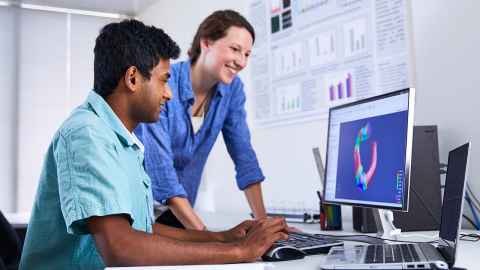Circulation and Transport
We use computational modelling and experimental measurements to develop quantitative descriptions of the movement of matter within the body.

These integrate knowledge over a wide range of length and time scales so we can better understand how the healthy body works and what goes wrong in disease.
Research questions
- Can we connect physiological function at the organ level to underlying cellular and subcellular processes?
Uptake/release of chemical substances by cells, their transport through blood and sensing by tissue underlie a number of regulatory processes in the human body, such as insulin secretion in response to a meal and the control of breathing in response to exercise. We use medical imaging, mathematical modelling, laboratory experimentation and computer simulations to understand how these processes affect the absorption of nutrients, secretion of saliva and water/salt balance in the lungs.
- Can we diagnose dementia and Alzheimer's disease earlier by combining clinical imaging with computational models of blood flow to the brain?
The burden of neurodegenerative disorders is increasing with an ageing population. Early diagnosis and intervention may help with reducing healthcare costs and improving quality of life.
New research suggests that changes in blood flow and water transport in the brain precede the appearance of physical symptoms. Our work aims to develop this knowledge into a tool that can be used for clinical screening of neurodegenerative conditions.
- Can we develop measurement and analysis systems to study microbial communities in the lab?
Microbial communities (microbiomes) have enormous influence on human and animal function and health. For example, the human gut microbiome has been linked to obesity, autoimmune disorders and mental health, while the rumen microbiome is responsible for digesting plant material in sheep and cows.
We use laboratory experiments, metabolomics/bioinformatic analyses and mathematical/statistical techniques bioreactors to develop predictive models that will improve our ability to understand and manipulate microbiomes.
Members
Primary contact
Academics
Peter Hunter
Soroush Safaei
Vinod Suresh
Students
Nima Afshar
Nazanin Ebrahimi
Zohreh Ekhlasi
Tabitha Manson
Nadun Palmada